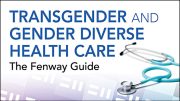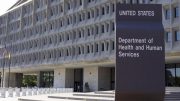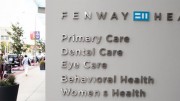Thursday, Feb. 7, is the 13th annual National Black HIV/AIDS Awareness Day (NBHAAD). As was the case in 2012, the theme for NBHAAD in 2013 is: “I am My Brother’s/Sister’s Keeper: FIGHT HIV/AIDS!” The purpose of the event is raise awareness of the impact of HIV/AIDS in the Black community. The U.S. Centers for Disease Control (CDC) estimates that among men who have sex with men (MSM), the greatest number of new HIV infections is among young Black/African American MSM age 13 to 24 years old, with about 4,800. These young Black/African American MSM accounted for 45% of new HIV infections among all Black/African American MSM and 55% of new HIV infections among young MSM overall.
These stats come from a December CDC report, Estimated HIV Incidence in the United States: 2007 – 2010. The report indicates that HIV incidence has remained stable in the country as a whole, with an estimated 47,500 new HIV infections in both 2008 and 2010 – the latest year for which official estimates are available. However, there have been substantial changes in HIV incidence in particular groups, including rising rates among men who have sex with men (MSM) and falling rates among Black/African American females.
MSM: In the U.S., MSM remain the population most heavily affected by HIV infection. The number of new HIV infections among MSM overall increased 12% from an estimated 26,700 in 2008 to 29,800 in 2010. An even greater increase (22%) occurred among 13- to 24-year-old MSM, with estimated infections rising from 7,200 in 2008 to 8,800 in 2010. CDC noted that, although MSM comprise only about 4% of the male population in the U.S., they accounted for 78% of the new HIV infections among males in 2010.
Race/Ethnicity: Comparing 2008 to 2010, the number of new HIV infections remained stable in all race/ethnicity groups. However, it is important to note that Blacks/African Americans and Hispanics/Latinos continue to be disproportionately affected by HIV infection. In 2010, Blacks/African Americans accounted for 44% of the new HIV infections, followed by Whites (31%) and Hispanics/Latinos (21%). The rates of new HIV infections per 100,000 population in Blacks/African Americans (68.9) and Hispanics/Latinos (27.5) were 7.9 times and 3.1 times, respectively, as high as the rate in Whites (8.7).
Age at the Time of HIV Infection: The estimated number of new HIV infections remained stable in all age groups between 2008 and 2010, according to CDC. Overall, in 2010, the estimated number of new HIV infections was highest among persons 25 to 34 years old (14,500), followed by persons 13 to 24 years old (12,200). In 2010, the highest HIV infection rates per 100,000 population occurred among persons 25 to 34 years old (34.9), followed by those 35 to 44 years old (27.3). Persons aged 55 years and older had the lowest rate of new HIV infections with 3.3 per 100,000 population. Among Black/African American males, however, the largest percentage (38%) of new HIV infections in 2010 occurred in those 13 to 24 years old; this percentage was substantially higher than that for the same age group of either Hispanic/Latino males (25%) or White males (16%).
Gender: The estimated number of new HIV infections decreased among females, falling from about 12,000 in 2008 to 9,500 in 2010. During 2010, the overall rate of new HIV infections per 100,000 population among males (30.7) was 4.2 times that of females (7.3). That year, the rate of new HIV infections among Black/African American males was 6.6 times that for White males and 2.7 times that for Black/African American females. The total number of new HIV infections among Black/African American females decreased 21% from 7,700 in 2008 to 6,100 in 2010. Nevertheless, the HIV infection rates for Black/African American and Hispanic/Latina females continued to be much higher – 20.1 and 4.2 times, respectively – than for White females. In 2010, the infection rates per 100,000 females were 38.1 for Blacks/African Americans, 8.0 for Hispanics/Latinas, and 1.9 for Whites.
Transmission Category: The estimated number of new HIV infections among males with infection attributed to male-to-male sexual contact increased, while the estimated number of new HIV infections among females with infection attributed to heterosexual contact decreased. As noted above, MSM continue to bear the heaviest burden of HIV in the U.S. The number of new HIV infections among females whose infection was attributed to heterosexual contact fell 18% from about 9,800 in 2008 to 8,000 in 2010. In 2010, the majority of new HIV infections was attributed to male-to-male sexual contact (63% overall and 78% among males). Among females, the largest percentage of new HIV infections was attributed to heterosexual contact (84%).
CDC Surveillance Data Yield New Estimates for HIV Rates and Racial/Ethnic Disparities Among MSM and IDUs
Last month, CDC notified its prevention partners about the availability of surveillance data with new estimates for HIV rates among MSM and injection drug users (IDUs). According to CDC, “It is critical to have accurate population estimates in order to better understand the HIV burden among risk groups as well as to make a substantial impact and save lives through better HIV prevention program planning. Without census estimates available for the IDU or MSM in the U.S., it has been difficult to quantify disease rates and disparities in disease rates among IDU and MSM compared to their population sizes in the same way we do for other factors such as sex, race/ethnicity, and age.” To address this difficulty, CDC researchers conducted two meta-analyses of multiple studies estimating the proportions of MSM and IDUs nationwide. They then combined these population estimates with other HIV surveillance data to calculate the rates of HIV among U.S. MSM and IDUs. The results of their calculations for MSM were published in The Open AIDS Journal, and those for IDUs were summarized in a recent poster presentation.
HIV and syphilis estimates for MSM
The CDC meta-analysis of MSM studies found that about 3.9% of the U.S. adult male population had engaged in same-sex behavior in the previous five years, and about 6.9% of males reported ever engaging in same-sex behavior. Using the 5-year estimate for the size of the MSM population, the CDC researchers calculated that the 2008 HIV diagnosis rate among MSM was about 67 times higher than that of other men and about 58 times higher than that of women. The calculated HIV prevalence among MSM was also about 42 times higher than that of other men and about 46 times higher than that of women. The analysis also found racial and ethnic disparities in new HIV diagnoses and prevalence rates among MSM. The 2008 HIV diagnosis rates among Black/African American and Hispanic MSM were 6.0 and 2.7 times higher, respectively, compared to White MSM. HIV prevalence rates were also higher: 3.8 times and 1.9 times higher, respectively, among Black/African American and Hispanic MSM compared to White MSM. The 2008 syphilis diagnosis rate among MSM was also about 71 times higher than that of other men and about 96 times higher than that of women. As with HIV diagnoses, there were significant racial and ethnic disparities in syphilis rates among MSM. The syphilis diagnosis rates among Black/African American and Hispanic MSM were 4.5 and 1.8 times higher, respectively, compared to White MSM.
The following are resources with the most recent data available on how HIV/AIDS is impacting the Black community.
HIV Among African Americans. This two-page fact sheet from the U.S. Centers for Disease Control (CDC) presents recent statistics, information on prevention challenges, and steps CDC is taking to address the HIV/AIDS epidemic in African Americans.
Diagnoses of HIV Infection Among Adults and Adolescents by Sex and Transmission Category, 2010: 46 States and 5 U.S. Dependent Areas. This 79-page CDC report includes detailed information about HIV and AIDS cases and deaths among Blacks/African Americans and five other racial/ethnic groups. Breakdowns are also provided by age, gender, HIV transmission category, and geographic region.
Black Americans and HIV/AIDS. This two-page fact sheet from the Kaiser Family Foundation was just updated in December. It provides detailed information on HIV/AIDS among Black Americans in the eight following topic areas: snapshot of the epidemic; key trends and current cases; women and young people; HIV transmission; geographic distribution of cases; access to and use of health care; health insurance; HIV testing; and opinions about HIV/AIDS.
HIV and AIDS Among African Americans. This online document from Avert.org provides an extensive overview of the HIV/AIDS epidemic in Black America, complete with citations to more than 70 source research papers and reports. Topics covered include: main risk factors among African Americans; how African Americans view the epidemic; and steps being taken to combat HIV/AIDS in the African American community.
Selected Organizations and Web Sites
NBHAAD website: This site provides background information about the awareness day, links to resources, a facility to register for NBHAAD events, and information about the Historically Black Colleges and Universities HIV/AIDS awareness initiative. You can also order posters and postcards to raise awareness of HIV/AIDS in the Black community.
Black AIDS Institute: The Black AIDS Institute is a leading organization addressing HIV/AIDS among Black Americans. Their website provides detailed information on a range of programs and reports focusing on the impact of the epidemic on the Black community. Recent reports include: Back of the Line: The State of AIDS Among Black Gay Men in America, 2012; Exit Strategy: Ending the AIDS Epidemic in Black America; AIDS: 30 Years Is Enuf; Deciding Moment: The State of AIDS in Black America, 2011; Passing the Test: The Challenges and Opportunities of HIV Testing in Black America; Rights Here, Right Now
National Minority AIDS Council (NMAC): The NMAC website has extensive resources in support of its mission to develop leadership in communities of color to end the HIV/AIDS epidemic. These resources include information on legislation and advocacy, conferences, training programs, and educational materials. HIV/AIDS Resource Center for African Americans: This special section on thebody.com website has links to numerous resources about HIV/AIDS in the Black community, as well as links to recent news articles, opinion pieces, and personal stories.
Center for AIDS Prevention Studies (CAPS): The University of California-San Francisco’s CAPS has compiled many fact sheets in English and Spanish on HIV prevention in different communities. CAPS fact sheets include: What are African Americans’ HIV prevention needs? What are Black Men’s HIV prevention needs? What are Black Women’s HIV prevention needs? These reports are available in both English and Spanish.
*Eric Brus is the Director of HIV Health Promotion of AIDS Action Committee. This report is produced by the Health Library of the AIDS Action Committee in collaboration with the New England AIDS Education and Training Center Minority AIDS Initiative Project. The full version is available online.
[From a News Release]









To tag on to my colleague’s post, AIDS Action is hosting an event on Thursday the 7th for National Black HIV Awareness day in Cambridge. For more info, check out AAC’s website at http://www.aac.org/events/coming-out-of-the-dark.html .